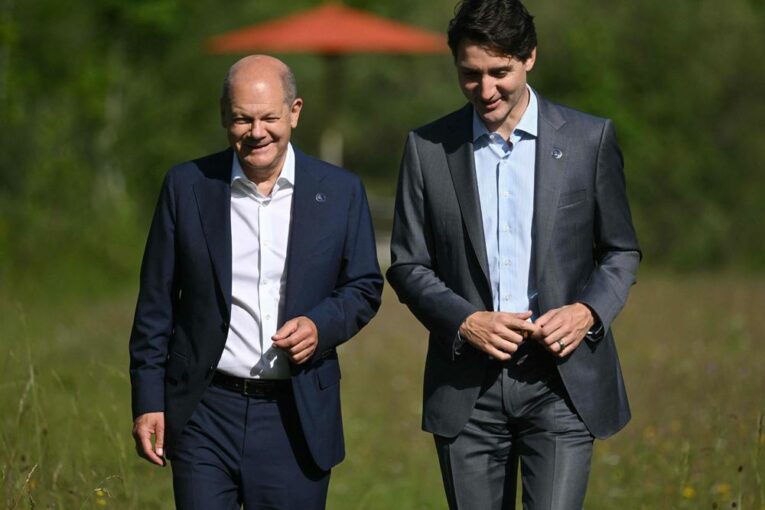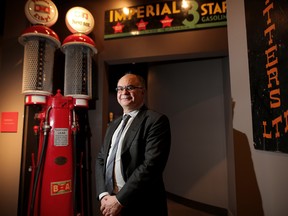
Hopes that Canada could one day see exports of liquified natural gas (LNG) bound for Europe from its eastern shores have been rekindled.
The energy crisis in Europe triggered by the war in Ukraine — and deepened by recent supply cuts through the Nord Stream 1 pipeline — have accelerated efforts by European governments to find alternatives to Russian fossil fuels. Canada has been asked to assist its allies in the transition, but so far has not been able to do much more than provide a marginal boost to oil supplies via exports to the United States.
But recent developments surrounding two projects on the East Coast suggest the possibility of Canada exporting fuel directly to Europe may be back on the table.
Calgary-based Pieridae Energy Ltd. announced that it will conduct a new feasibility study for its proposed Goldboro LNG project in Nova Scotia, which was shelved last year over the necessity of upgrading pipelines to the plant and the potential for cost overruns that could make it uneconomic to proceed.
But a significantly scaled-down version of its proposed liquefaction plant — crucially requiring fewer pipeline upgrades — and costing between $2.5 to $3 billion, could still be viable, said Pieridae CEO Alfred Sorensen.
The world has changed a lot in last six months
Alfred Sorensen
“The world has changed a lot in last six months,” said Sorensen, adding that the federal government first contacted the company about the possibility of renewing the project in January, when fears of a Russian invasion of Ukraine were mounting.
“Now that Russia has begun using natural gas and oil as a weapon against Western Europe, that urgency to get off Russian gas continues to grow,” Sorensen said. “And that’s where the genesis of our project was originally, when we first did our contract with (German energy firm) Uniper, was specifically because Germany was worried about their reliance on Russian gas.”
A smaller terminal could handle volumes of around 300 to 400 million cubic feet per day (MMcfd) of gas, Sorensen said, versus the previously envisioned capacity of over 1 billion cubic feet per day (bcfd).
Sorensen cautioned that even a scaled down version of the plant would require upgrades to TC Energy Corp.’s pipeline system in Ontario and Quebec, which connects to a line feeding the Maritimes and customers in the U.S. Northeast, and runs through areas that have been inhospitable to pipeline projects in the past. A key 70-kilometre stretch of pipeline south of Montreal is currently causing the most concern, Sorensen said.
“(TC Energy) is unwilling to take exposure to cost overruns,” Sorensen said. “And that’s really driven by regulatory issues or general public disobedience when it comes to a fossil fuel project. No different than what you’ve seen at the Coastal (GasLink) pipeline and those types of things, where the disruption of the construction process results in higher costs and that’s what TC wants to be indemnified against.”

However, Sorensen and other proponents of LNG in Atlantic Canada are hopeful that political circumstances — and public opinion in Quebec in particular — may have shifted enough to temper opposition to the project in Eastern Canada; though a lengthy permitting process, stakeholder pushback, and inflationary pressures could still delay development for years.
“We’re in a different environment. We may not see that happen this time because the world’s priorities have changed,” said Sorensen. “Whereas climate change was maybe the number one issue for some people a year ago, it’s fallen.
“When you look at polls in Quebec, where any kind of energy infrastructure was being fought, to a more changed view that Canada has a responsibility to help solve some of these issues Western Europe is having with energy supply — and a change in attitude, changes the risk profile.”
Sorensen clarified that work remains to fully understand the extent to which the project’s risk profile may have changed. And experts say a lengthy permitting process, stakeholder pushback, and inflationary pressures could still pose significant obstacles to development.
“The fact that these projects are revived isn’t that much of a surprise, particularly given the war in Ukraine and the emphasis on energy security,” said Ian Archer, associate director of North American natural gas for S&P Global Inc.’s IHS Markit. “But there’s still challenges that exist before these things could make it past the finish line.”
Another obstacle for the Goldboro project could be competition from an existing LNG facility in Atlantic Canada.
According to a report by Reuters, Environment Minister Steven Guilbeault said Canada’s East Coast only has enough gas to supply a single new LNG project, and the proposal that may be the furthest along is Repsol SA’s existing LNG facility in New Brunswick, which could be expanded to facilitate exports.
Guilbeault echoed the suggestion that pipelines may be the sticking point. “Repsol is probably the fastest project that could be deployed because it requires minimal permitting – there’s already an existing facility, (and a) gas line is right there,” Guilbeault told Reuters.
A spokesman for the Saint John LNG facility said the company is aware of the increased interest in the project.
“Repsol is continuously exploring options to maximize the value of the terminal, with a particular focus on new lower-carbon opportunities to help meet market demand and to support the energy transition,” Mike Blackier said in a statement. “The company will look at any/all business that enhances or creates value at Saint John LNG, including the potential to add liquefaction capabilities to the existing facility.”
Both projects would likely require upgrades to existing pipelines which could face stiff opposition, particularly in Quebec. Opposition to energy infrastructure, on both coasts, has been a significant impediment to the sector’s overall growth, experts acknowledge.
“The biggest issue we’ve had has been the capital cost, the regulatory delay and regulatory hurdles, as well as pipeline construction and opposition to pipelines,” IHS Markit’s Archer said.
“You do need a pipeline to get that gas from northeast B.C. or northwest Alberta to the coast. And that’s proven to be expensive and obviously has faced some extremely dedicated opposition to say the least.”
The reality is that in the short term, Canada won’t be in any position to directly ease European gas shortages. Though LNG export projects on the West Coast are closer to reaching fruition — and perhaps in volumes that could meaningfully affect or reduce global prices, experts say.
“It would’ve been nice if we had built these facilities when they weren’t needed, so that they were actually in service when they are needed,” said Rory Johnston, founder of Commodity Context and an investor at Price Street. “But unfortunately it’s really only these crises that kind of remind us of the reason to build up this kind of capacity in the first place.”
You can read more of the news on source
